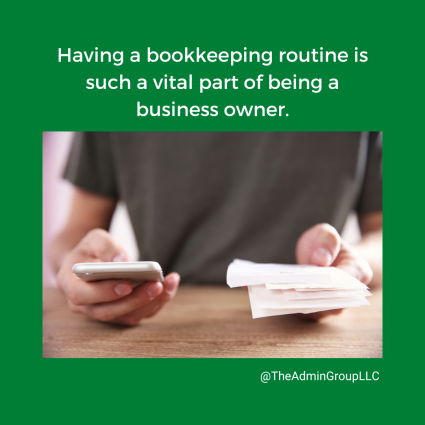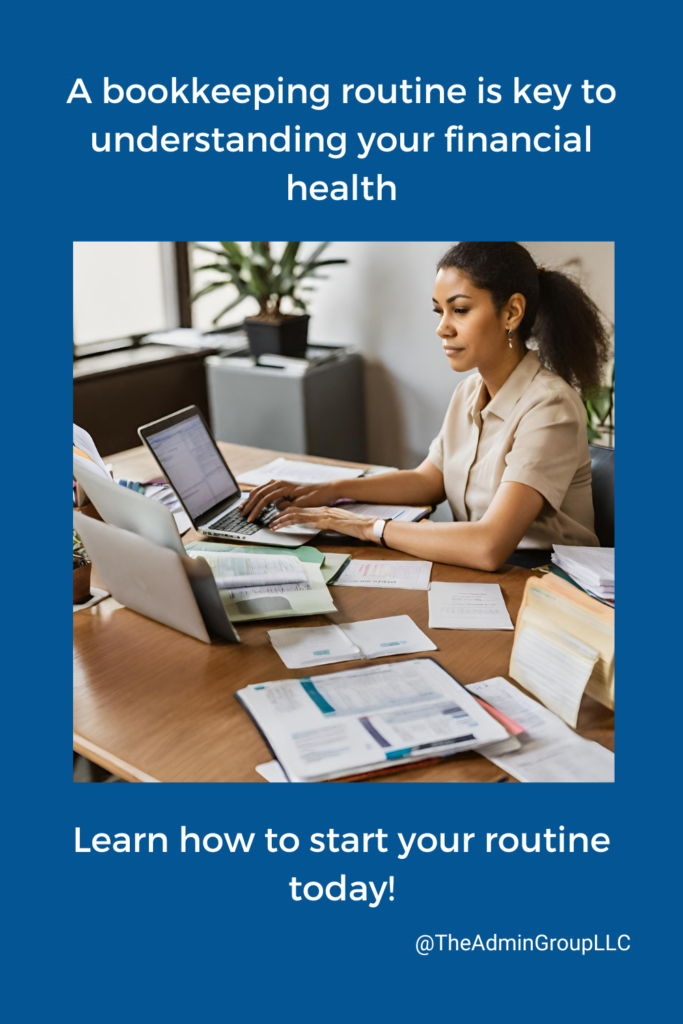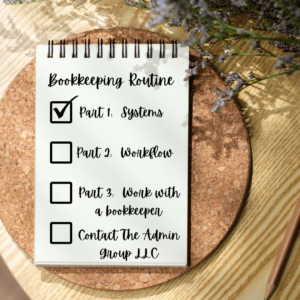Creating a Bookkeeping Routine Part 1: Setting Up Your Systems

Having a bookkeeping routine is such a vital part of being a business owner. This routine will look different from business to business, and how complex it gets will also depend on both the industry you are in and the size of your business. This series of posts is intended for service-based businesses that have few to no employees.
In Part 1 we’ll discuss your systems
In Part 2 we’ll discuss your workflow
In Part 3 we’ll cover working with a bookkeeper

Your Systems –
Step One: Decide where to record your money so that you always know where it came from and where it’s going. Having this system in place will allow you to understand your financial health throughout the year as well as give you the confidence you desire when you head into tax season. (Ask any tax accountant and they’ll quickly tell you how much they love their organized clients!)
- Best Practice: Cloud-based accounting platform
- The ones we work in:
- Xero
- Freshbooks
- WaveApps
- Though this one is free for very basic use, we don’t recommend this one. Unfortunately, we’ve seen system errors causing inaccurate reports and Wave no longer offers access to tech support unless you pay for services.
- Quickbooks Online
- Unless you are willing to commit to the time it takes to learn a platform, we highly recommend you hire a bookkeeper certified in the platform you’ll be using. Even if you want to DIY your own books, it will save you time and money to have one that checks in on your books at least once in a while during the year to make sure you are on track.
- The ones we work in:
- Other option:
- Microsoft Excel or Google Spreadsheets
- We recommend this route to new business owners who just have a few basic transactions each month and don’t intend to hire a bookkeeper just yet. While there are some major issues with going this route, it is a great basic start.
- Microsoft Excel or Google Spreadsheets
Step One A: Yes, I’m throwing in a sub-step! But stay with me. Another thing you need to decide is how you plan to invoice your clients and accept payments. Most accounting platforms offer invoicing with the ability to sync with payment processors such as Stripe or Square. If you want everything done through one system, then you’ll want an accounting platform that offers invoicing that’s capable of doing what you need. If you prefer to process invoicing in a separate system, then it would be beneficial to decide if you want this system to integrate with your accounting platform, or if you’ll manually import that data.
Step two: Decide where and how you’ll maintain important documents, receipts, and statements.
- Best Practice: Digitize all documents
- Ideally, store on both on a computer or hard drive AND in a cloud-based storage system
- In the event something happens to one, you have a backup.
- Cloud-based storage also offers the easy of access regardless of where you are.
- Benefit of this Method:
- More organized/easier to sort through to find what you need
- Ease of access
- If your bookkeeper or tax preparer works remotely, it’s easier to share data with them
- Easier to retain for a long time without using up valuable physical space in your business
- Ideally, store on both on a computer or hard drive AND in a cloud-based storage system
- Old-School method: Keep a physical filing system
- We get it, some people are just old-school and have an easier time staying organized when they work with physical paper
- The downside:
- Not easily accessible unless you are physically there AND you have great organizational skills
- Unless you keep them in a fireproof, waterproof, lockable cabinet, you run the risk of losing all the records in the event of an unfortunate event (natural disaster, theft…)
- If we are being real, most of us WISH we were organized, but in reality these papers will just stack up on our desk or in a box. Next thing you know, it’s tax season and you have an embarrassing mess to hand to your tax accountant – which will likely be followed up by an invoice that has an extra charge on it.
Once you determine your systems it’s time to create your workflows and come up with a good bookkeeping routine. Continue to Part 2
